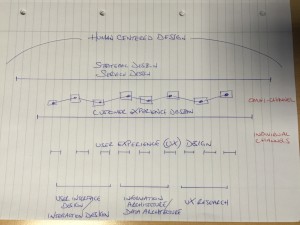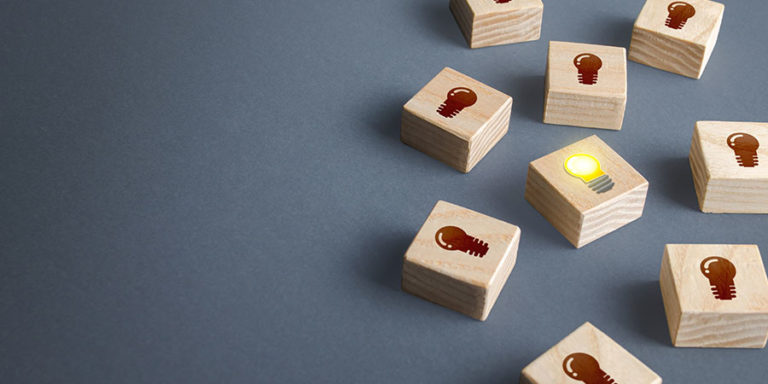Designers in Demand: Why the fight for design talent is hotting up
As a recruitment company in the digital space, over the last year we’ve had an increasing amount of requests for certain types of designers, with terminology that until fairly recently was quite unfamiliar to us.
Unless you work in design, you may not be accustomed with terms like ‘human centered design’, ‘design thinking’ or ‘customer driven innovation’. However, as I myself have observed, these terms are now becoming more mainstream and people from all parts of the product development chain are moving toward this new way of thinking. In fact, it could be argued that for any modern technology company, the backbone of product development is this ‘design thinking’ or human centered design (HCD) approach.
HCD is a creative approach to problem solving and, as far as I am aware, was first coined by IDEO.org, one of the world’s leading Design & Innovation consulting firms, headquartered in California. The process starts with the people you’re designing for and ends with new solutions that are tailor made to suit their needs. It can be applied to just about any type of product (and has been for quite some time), but now more than ever is applied to technology products as a matter of course.
One such advocate of this type of practise, a leading proponent of linking design and technology, is John Maeda. Originally a software engineering student at the Massachusetts Institute of Technology (MIT), after completing his bachelors and masters degrees at MIT, Maeda studied in Japan at Tsukuba University’s Institute of Art and Design to complete his Ph.D. in design. As a designer, computer scientist and author, he served as a professor at MIT before transitioning to the commercial business arena. His work in design, technology and leadership explores the area where the fields merge, and he is seen as a pioneer in this area. If you are trained in design you are probably familiar with him. If not, I would recommend checking out one of his TED talks, which will give you an idea of the thinking behind how design and technology are linked.
At Touchpoint Resource, our clients are typically companies in digital innovation space, including everything from infant start-ups to large enterprises and digital consultancies – all vying to create ‘game-changing’ digital products and services. With this is mind, it’s perhaps unsurprising that the design function is extremely important and that there is an increasing need for designers of various disciplines. However, what is particularly interesting is the way that the design function is evolving and how the ‘stock’ of designers is going up. No longer seen as people doing the ‘fluffy’ stuff, designers are at the sharp end of envisioning and perfecting products that make life better! Whereas we were typically recruiting for Visual Designers a couple of years ago, we are now being asked to build talent pipeline in the areas of Strategic Design, Service Design and Customer Experience Design. Please don’t get me wrong, the Visual Design roles are still in demand, but even with these there is now an increasing emphasis on finding designers with a HCD approach and an analytical mindset. Essentially, the full suite of design disciplines is transitioning into more of a HCD model, founded on a research based mentality and a desire to create products and solutions that meet human needs and preferences.
I used to think that human centered design was a discipline in itself (and in one respect it is). However, I now see the design thinking paradigm as something that permeates all the different functions of the design process, albeit at varying levels. And this is what a lot of the leading tech companies want: Designers that can combine their artistic flair and technical skillset with research based problem solving skills (always keeping the human end-user in mind).
As a parent of a child who loves art and designing things, I’m really encouraged by this! It seems that being good at art and design is something to encourage at every opportunity! Yes, maths and engineering are important, as are the other core subjects, but the artistic and design skillsets are by many being recognized as equally important. The aforementioned Maeda is leading the “STEAM” movement–adding an “A” for Art to the education acronym STEM (Science, Technology, Engineering, and Math).
Design roles in a digital technology company
I appreciate that there will be differing (and more educated) opinions than my own, and I’d be interested to learn them, but below is my interpretation (albeit with the help of a candidate who explained the design ecosystem from his perspective). The overarching influence is HCD.
There is now so much scope and opportunity for design thinking people to have an impact in creating technology that will quite literally change the world. This is already happening and it has been for many years…. think iPhone. Only now there is much wider and general appreciation in tech businesses for the role of designer.
Creating and designing is something at the core of what it means to be human. We have an innate desire to fix problems and make things better.
What an awesome vocation to have! No wonder that with technology being such a major part of our lives now, the demand from tech companies for designers is increasing.
Steve is one of our Managing Directors. To see more about Steve, including the posts that he’s written, you can find him on LinkedIn. You can also head over to our company page, where you can find all of our posts, latest jobs info, and daily posts to keep you up to date with the latest talking points in the worlds of tech and recruiting.



